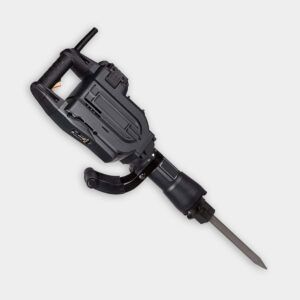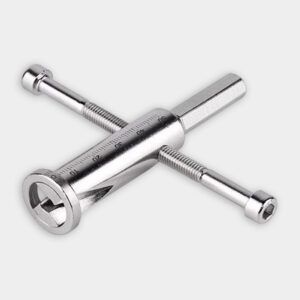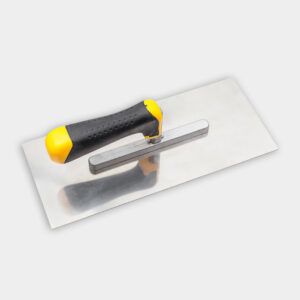Project details
Skill
Cost
Estimated Time
The front steps appear to be original to the 1940s house and they haven’t aged well. This Old House Mason Mark McCullough demolishes the original and installs a base for the new steps. Then, he takes a tour of the facility where the precast concrete steps are made.
Steps for Installing Precast Concrete Stairs:
Back at the homeowner’s, the steps are delivered and set into place.
Step 1: Remove the steps
The easiest way is by using a jackhammer. Some things to keep in mind:
- Safety—first and foremost, this is a heavy piece of equipment that needs to be controlled at all times. Make sure to wear ear protection for the sound, eye protection for the broken pieces of stone, and a dust mask for the debris.
- Find the weak point – Determine a location where the steps appear the weakest. This will be the easiest place to break and weaken nearby pieces of stone.
- Hold it straight – Hold the jackhammer straight up to get more leverage. Holding at an angle can cause the machine to slip out from under you. You should be able to let the tool do the work without much extra effort.
Step 2: Clean up debris
- A dumpster bag can be used, just schedule a pickup for once the project is done. Sometimes the material is worth saving to reuse elsewhere, this homeowner decided to keep the stone to upcycle into a fire pit.
Step 3: Prevent ground movement
- The original flagstone steps in the segment had no base, so as the ground moved over time, the steps settled into a downward slope.
- To prevent this, a concrete base should be poured to keep the new steps in place.
Step 4: Prep the base
- Dig until you have gotten rid of the topsoil and compact with a hand tamper until level. Topsoil can lead to settlement.
- Mark added about 8 inches of crushed stone, this will help with water drainage. Tamp the crushed stone or gravel to create a level surface.
- Use pieces of 2×4″ to build a form to contain the concrete pad.
Step 5: Add rerod posts into the ground
- Place each row about a foot apart and each column two feet apart.
Step 6: Take rerod to run lengthwise across the length of the form
- The rerod and posts will need to be connected.
- Use a steel tie to wrap around both units and use a tie twister to put through the eyes of the tie and twist until it is tight.
- The rerod should be kept high enough that the concrete has plenty of room to go underneath, but also about 2 inches below the surface of the concrete. The rerod reinforces the concrete and if it was sitting on the crushed stone it wouldn’t be giving any support.
Step 7: Take shorter rerod for the width of the form and place them on top of the rerod going lengthwise
- Then, take steel ties and wrap them around where the rerods cross.
Step 8: Mix the concrete
- Mark uses a high strength concrete mix with a strength of 5,000 PSI.
- Use a wheelbarrow to empty a bag of concrete and create a crater into the center of the dry mix.
- Get the recommended amount of clean water and start by pouring a portion of it into the crater and thoroughly mix before adding more to reduce stiffness.
Step 9: Pour concrete onto the base
- Repeat the mixing process as needed.
Step 10: Use a finishing trowel to smooth the concrete
- Push it to the edge of the wooden frame to make level.
Step 11: Let the concrete set overnight
- Now it’s time for the delivery of the precast concrete steps. The professionals will install the stairs into place.
Resources
Mark toured the facility and then installed precast concrete steps with a stone veneer from Shea Concrete. Steps can be ordered to size and with the desired finish (if any), and they are delivered directly to the site.
Before the steps can be delivered, the old steps needed to be removed, and a new concrete base needed to be poured. The jackhammer used to remove the steps can be rented from any home center, and the other materials used for the job, including the concrete mixes, wheelbarrows, trowels, and shovels can all be found at home centers as well.





